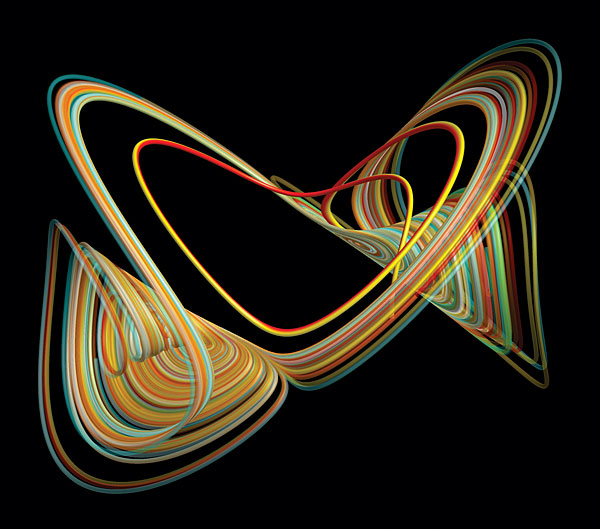Deterministic chaos and geomagnetic reversals
DOI: 10.1063/PT.3.1727
Apart from mostly slow drifts of the magnetic poles, Earth’s dipole is nearly stationary. But every so often—most recently 780 000 years ago—the dipole will flip to the opposite polarity. Although hundreds of such reversals have occurred over geologic history, they have no regularity, and the flipping is relatively quick (typically a few thousand years) compared with the intervals of constant polarity. What causes the reversals is one of many questions that remain about the geodynamo that drives Earth’s field (see the article by Daniel Lathrop and Cary Forest in Physics Today, July 2011, page 40
Computational limitations prevent numerical dynamo simulations from using realistic values in their magnetohydrodynamic equations. But, show Christophe Gissinger and his colleagues at École Normale Supérieure, much of the behavior of the complicated system can be captured by a simpler, deterministic model that has only three variables: the dipole strength, the quadrupole strength, and a flow that breaks equatorial mirror symmetry. Nonlinear couplings between the variables lead to chaotic three-dimensional trajectories like this one. As seen at left and right in the image, the system spends most of its time near one of two fixed points—the two polarity orientations—with irregular jumps to the other. During the reversals, the field never vanishes: The energy shifts between the dipole and quadrupole modes. The modeled reversals also involve asymmetric flows. Indeed, paleomagnetic data and larger-scale simulations show correlations of reversals with large thermal plumes and heterogeneous heat flux at the core–mantle boundary. (C. Gissinger, Eur. Phys. J. B 85, 137, 2012; C. Gissinger, E. Dormy, S. Fauve, Europhys. Lett. 90, 49001, 2010. Image by Christophe Gissinger.)
To submit candidate images for Back Scatter, visit http://contact.physicstoday.org

Image by Christophe Gissinger

